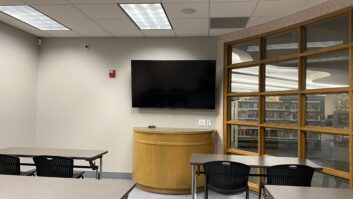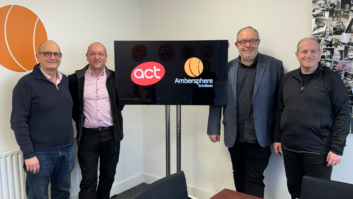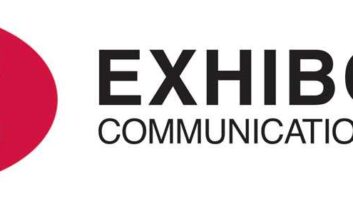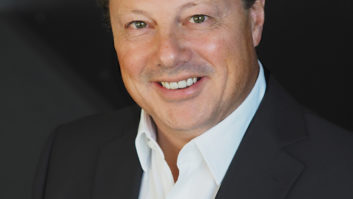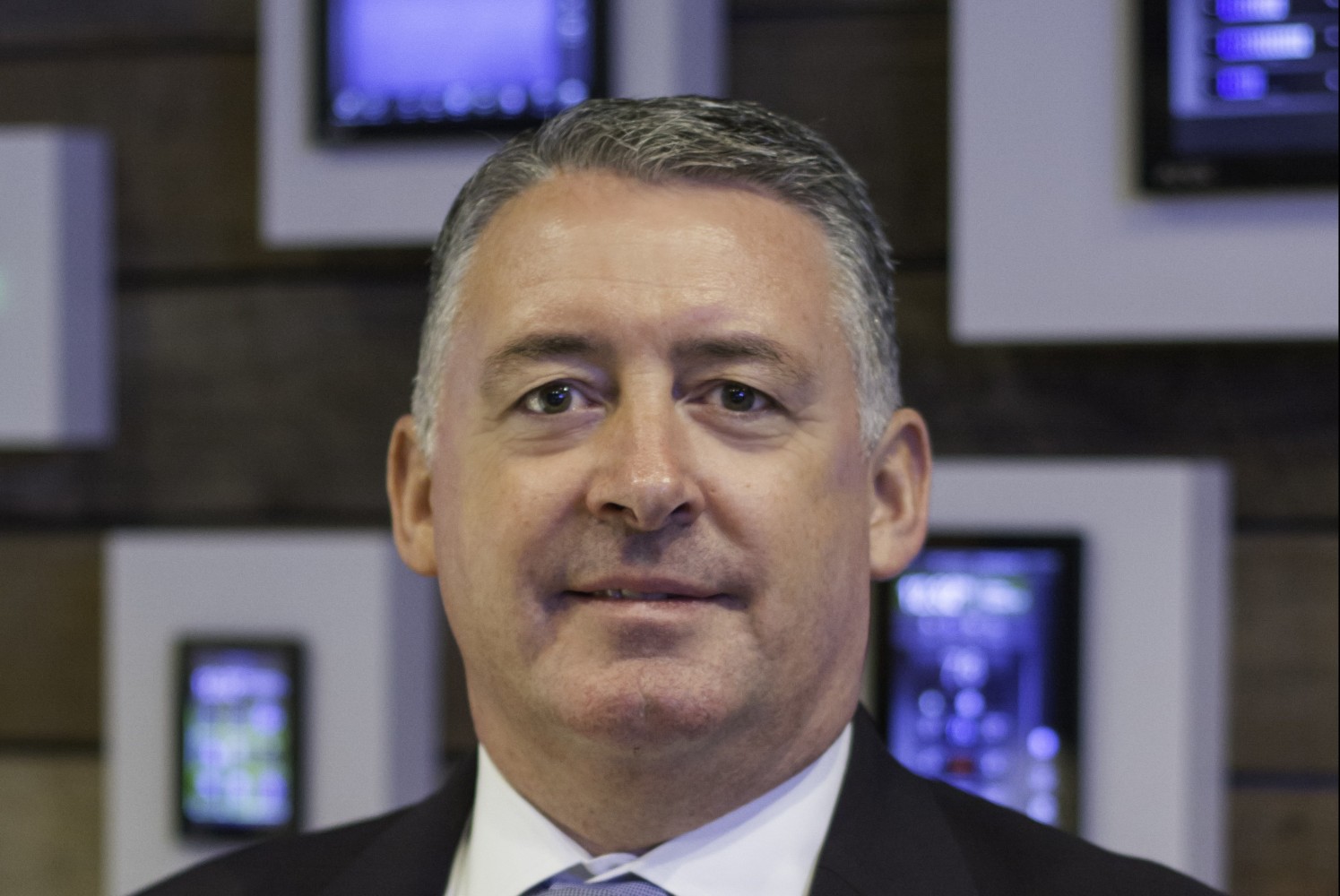
We previously published an extract from Paddy Baker‘s interview with Kevin Morrison, leader of Harman’s Enterprise Strategic Business Unit. Here’s the full article, covering Harman’s new structure and how this will drive business growth, as well as opportunities arising from recent acquisitions to the company portfolio.
In case you hadn’t noticed, Harman is changing. At the end of July, the company unveiled its new logo, which, according to a statement, “represents the Company’s mission to enable seamless, connected lifestyles for the home, car, stage and enterprise through its leading audio products, infotainment systems, software and connected services”.
At the same time, the company renamed many of its divisions: for instance, Harman Professional became Harman Professional Solutions Division. Also a new Connected Services Division was formed from Harman Automotive Services and two businesses acquired during 2015: Symphony Teleca, a product development and software services company; and Redbend, which provides software management and firmware upgrade services.
Shortly afterwards, the company announced a new customer-centric organisational structure, which which took effect on 1 October. This divides the Professional Solutions Division into three strategic business units (SBUs): Enterprise, led by Kevin Morrison; Entertainment, led by Bryan Bradley; and Products, led by Mark Ureda.
I speak on the phone to Kevin Morrison, who left his native UK to become a full-time resident of Dallas in July, “after going back and forward for about 18 months”. If there’s one word that keeps cropping up during our conversation, it’s excitement: for the potential of recent acquisitions, and for the opportunities that the new structure brings. So let’s look a little more deeply into that structure.
The Enterprise SBU, which is where Harman’s installation business predominates, consists of three customer solutions units (CSUs): corporate, education and government – “which has long been the focus of AMX, though now we’re selling the whole Harman product portfolio to these customers”, says Morrison; large venues – comprising stadiums, convention centres, public transport; and hospitality, which includes hotels, casinos, houses of worship, and the bar, club and leisure industry.
There’s a small degree of installation within the Entertainment CSU – mainly in the cinema business – but it also comprises touring (offering audio, video and lighting) and retail (that is, Harman products that are sold via retail “such as portable PA and AKG headphones”).
Enterprise growth
The revenue split between Enterprise and Entertainment is “about 50-50”, says Morrison. “But the Enterprise piece is where we think we’ll see most dramatic growth, and that really does face the install business.”
So where does he see that growth coming from? “Traditionally in the install business we’ve been very transactionally based. We’ve sold speakers, or architectural lighting, or some control and audio – but we’ve not really gone out there offering the technology as a complete solution. Each of the customer solutions units has their own customer-focused marketing resources and solutions managers who really understand the application.” So, for instance, in Enterprise for example, there are experts who know how to work in higher education and understand how the collaborative classroom works. “We will develop product as well as supply product for that install market, all based on a solution.”
It’s a very different model for Harman, although it’s one that AMX had had for quite some time, he says – “working with end users and the channel, and driving that back through end user forums, dealer forums and consultant forums. Now we’re doing this across the whole of Harman Professional, which I think is the right way for the business to grow.” He continues: “Our product management and our customer solutions people lie within the customer solutions unit. They will do their product marketing job as usual and go to our engineering group, which is the Products SBU, to build their technology – on price, on time, on target.”
Of course, it’s long been a strength of Harman that technology developed for one brand is used in others, and the new structure will allow this to continue. “The teams within the SBU will work together across the CSUs to create a product that will be good for several of the CSUs,” he explains. But what if different markets want slightly different variants? “Well, I’m sure as big boys we’ll all come to some agreement! It’s a question of prioritisation, revenue opportunities and everything else.”
I suggest that one way in which the new structure is more like old Harman is that it is globally integrated at the top level – with all the most senior people having global responsibility. “I think that’s very much the nature of our industry,” he replies. As an example, he cites how government business used to have security requirements that were specific to North America, but now “the security applications on the AV products themselves, are pretty similar across the board [globally].” Similarly, he says, corporate customers are looking for global standardisation and global rollouts – “so I think it makes sense to address them like that”.
He continues: “The level of excitement around the business is very good and very healthy… First and foremost it’s most important to try and make the products easier to talk to each other and install, and that’s one of the first passes, but we’ve got a tremendous war chest of technology here, and I’m very excited for the next phase of what this will bring to the market.”
Joint product development
At InfoComm 2014, when the Harman-AMX merger was announced, it was said it would be about 18 months before we saw the first new products that drew on technologies from both sides. Are we just about there now? “We’ve started, certainly,” he says – citing as an example AMX’s RPM configuration tool, which now includes native Harman devices as standard, “so you don’t have to configure BSS tools with Audio Architect now, you can do it all within RPM. So that’s the first flush, and I think you’ll see a lot more to come… we’ve got a lot of the technologies to talk to each other in native mode rather than via a third-party device, which will make the industry able to adopt and use the technology without a huge deal of effort.”
Earlier this year, the “war chest of technology” was bolstered when Harman bought SVSi. “The acquisition was quite a long time in the making,” he observes. “We had been engaging with SVSi before AMX was acquired by Harman, but then we had to put that on the back burner for a while.” He sees the acquisition as “a great play for the business – they’re a great company, they do extremely well, we’ve got great referenceability for SVSi in the space and I really see this as the future of video over the network. I’m very excited about what SVSi can do under the Harman umbrella.”
He explains that SVSi had its origins about 15 years ago in high-speed camera development for packaging. “Their job was to take hundreds of frames per second pictures of all the stuff on the packaging line and bring this back over the network. They realised that while this was fairly good business, most people were more interested in getting video across the network than the camera applications.”
He sees the acquisition as timely: “I think the equilibrium point has passed where people were nervous about video on the network, and we see the floodgates are just about to open. I’m excited about these guys – they do a tremendous job, they’ve put several years of knowledge into the network architecture and it’s a great product.”
Getting Connected
Looking at Harman at the highest level, there are three other divisions that sit alongside Professional Solutions: Lifestyle Audio (including, among many others, JBL Bluetooth speakers, AKG consumer headphones, Mark Levinson home audio products); Connected Car (including navigation, multimedia and telematics); and Connected Services (“cloud, mobility and analytics solutions that enable a connected world”, according to the website.) Will developments within this last division have an impact on Professional Solutions? Within Connected Services, Morrison highlights Symphony Teleca: “They’re a great bunch of guys who have got some very clever software. They’ll make a holistic application for you, whether you’re a bank or a set-top box manufacturer, they’ll be right in the middleware and the apps around it… We are already engaged with end-users and partners talking about the possibility of where Symphony Teleca, AMX and the audio division can take the customer of the future.” Non-disclosure agreements prevent him from saying much more, but a look at the Harman website indicates we are in the ‘future of work’ area, involving the Internet of Things, smart sensors, using mobile phones as individual markers within the workplace, and so on.
So can he say anything about the direction of any further acquisitions? “As we’re a public company, I can’t. We’re always on the lookout for smart companies that can augment the product portfolio – SVSi was a prime indicator for me of what could be done here – but there’s nothing to talk about at the moment.”
To round off the interview, I ask Morrison: What’s the key message that you would like to send out to AV integrators about the new Harman structure and the way ahead? “There is now a company that has a very extensive portfolio of audio, video, lighting and control – I’m not sure if there are any companies that have such a powerful line-up – and putting these together, we’re going to start to drive some pretty compelling customer-focused solutions for this product portfolio. I believe it’s long awaited by the integration community for us to have done this – and now I think we’re there. It’s a great opportunity for people who have seen the brands grow up independently under their own business units to now get access to all of these technologies. The way they all develop under this new structure will be pretty exciting for the whole community.” There’s that E-word again.
Kevin Morrison – a brief biography
• Kevin Morrison was president of CCC USA for eight years and CEO of Endeleo, a UK manufacturer of TV and media distribution technologies, for three
• He joined the AMX fold when that company acquired Endeleo in 2006, and he became managing director of AMX Europe’s network media business
• He became managing director of AMX Europe in 2008, moving to a global role as executive VP of sales in 2014
• Following Harman’s acquisition of AMX in 2014 he became global sales leader for the Video & Control SBU. He was announced as Enterprise SBU leader in August 2015


